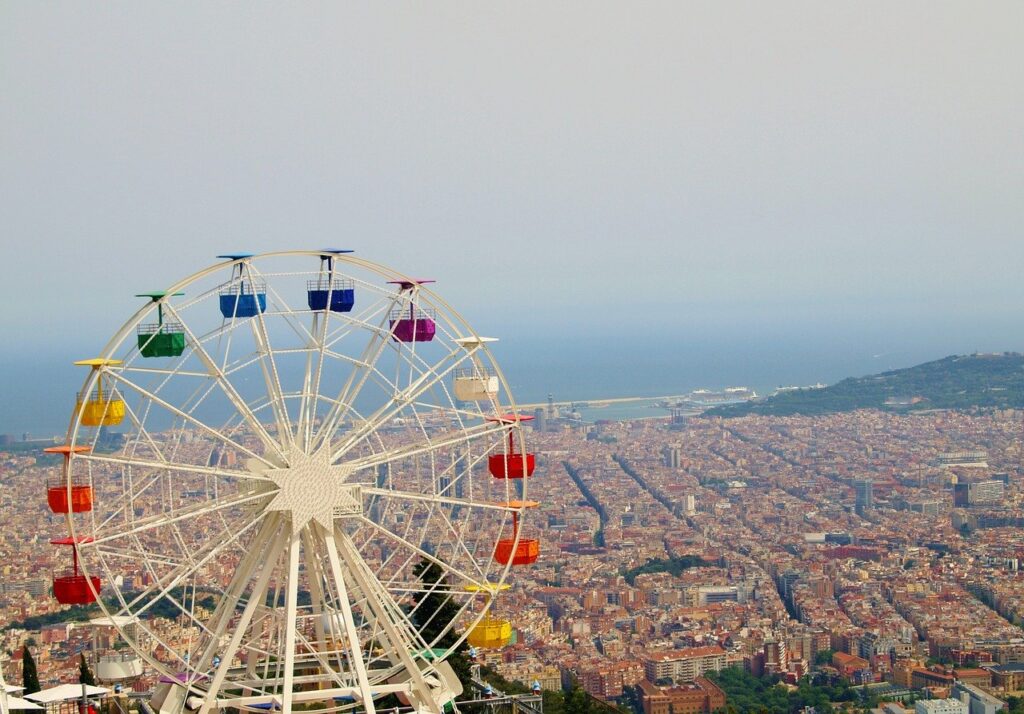
One of the most visited cities in all Europe, Barcelona has a lot to offer. You will experience the perfect Mediterranean climate, the amazing Spanish cuisine along with admiring many architectural masterpieces from Gaudí.
Camp Nou
Camp Nou is the biggest stadium in Europe, counting 99,354 seats with expansion plans on the making for it to grow to 105,000 seats. It’s the home of FC Barcelona since 1957 and is located in the western Les Corts neighborhood.
The Camp Nou tour is the most popular tourist attraction in the city of Barcelona (estimated population 1.6 million) attracting around 32 million tourists per year. The tour includes visiting the museum of Barcelona, walking around the stadium, visiting the players changing rooms, the commentary boxes, and a lot more.
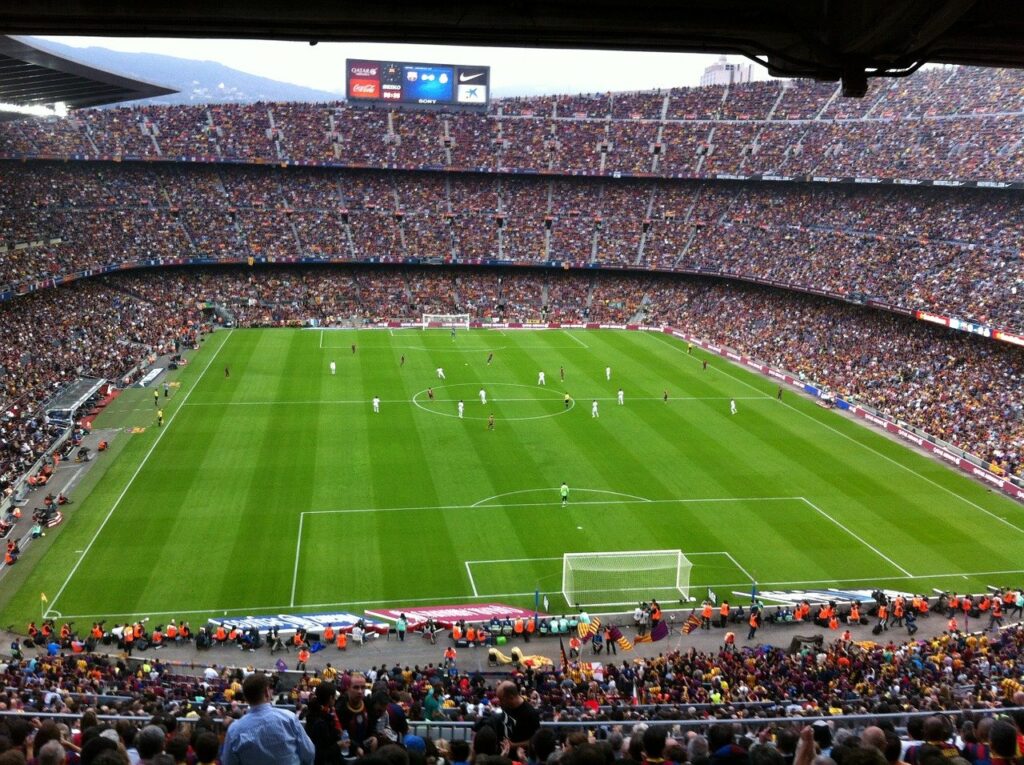
The museum of Camp Nou is breathtaking featuring digital walls that you can interact with and choose what you want to learn about. You can find out more about the history of FC Barcelona or view your favorite moment. All the trophies FC Barcelona got till 1957, even the individual’s trophies like Lionel Messi’s Ballon d’Or are available for you to admire and take a picture.
Sagrada Família
Visiting Barcelona means visiting the Sagrada Família the most iconic masterpiece of the city. It’s been on the making for the past 140 years when Antoni Gaudí first became involved and there is still a lot of work to be done to be complete. When the plans are finished it will be the tallest church building in the world and hardly can be compared to any religious structures you have seen in your life.
Because The Sagrada Família is still in the making after all these years, it combines several architectural styles and this creates quite a bit of difference in the colors and techniques used throughout the church.

The church might be exceptional from the outside but the interior is very impressive as well. From the glittering glass windows to the towering columns and arches to the complex details in the architecture, every aspect of this incredible church will take your breath away. However, knowing exactly what you’re looking at can make the experience much more fulfilling.
You can spot the difference between the new and old parts and can easily see that there are different colored stones to the front and different at the back of the building. Finally, you have to option the climb up one of the four towers using either an elevator or multiple twisting staircases, which may be a little rocky. In the end, you will be rewarded with an amazing city view.
Picasso Museum
The Picasso Museum stores one of the most complete permanent collections of artworks worldwide by the 20th-century Spanish artist Pablo Picasso. Picasso moved to Barcelona when he was 14 and even though he traveled frequently he lived there most of his life.
The museum holds today around 4200 Picasso’s early works from painting to sculpture pieces making it even more fascinating. The museum is housed in five neighboring medieval palaces in Barcelona’s La Ribera district, in the Old City. More specifically, it is located on Montcada Street a formerly prestigious street home to wealthy merchants and nobles from the Gothic to Baroque periods.
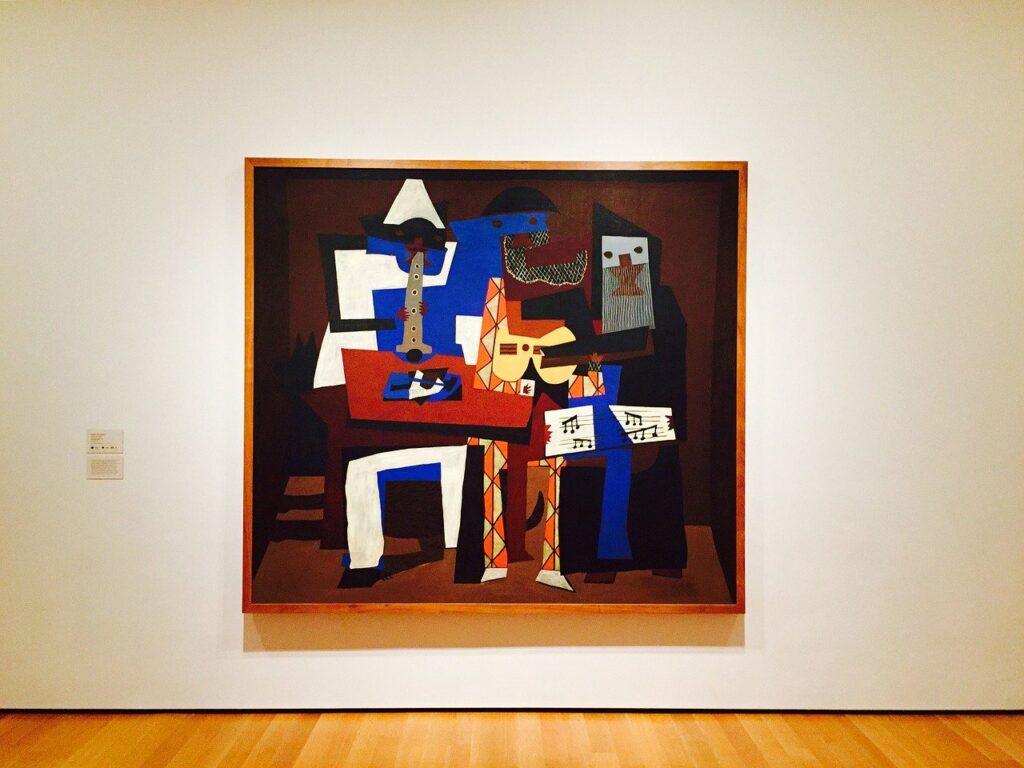
The museum includes many amazing pieces of Picasso’s artwork and splendid paintings. You can appreciate artworks like The First Communion (1896), and Science and Charity (1897) as well as many other well-known pieces of art that reflect the relationship Picasso had with the city of Barcelona.
Picasso’s Museum opened to the public on 9 March 1963 and was the only museum dedicated to the artist while he was alive. Later on, the government of Catalonia declared it a national treasure.
Articles Recommended:
Las Ramblas
Las Ramblas is Barcelona’s most famous street connecting the Plaça de Catalunya with the Christopher Columbus Monument at Port Vell. It is a pedestrian street full of trees that reaches around 1.3km.
The street view has now adapted to tourist’s life as it provides plenty of old-school florists, gelaterías, and candy shops offering bites of crema Catalana. Also, you will enjoy talented street performers, and endless gardens to appreciate a meal or coffee along the way.
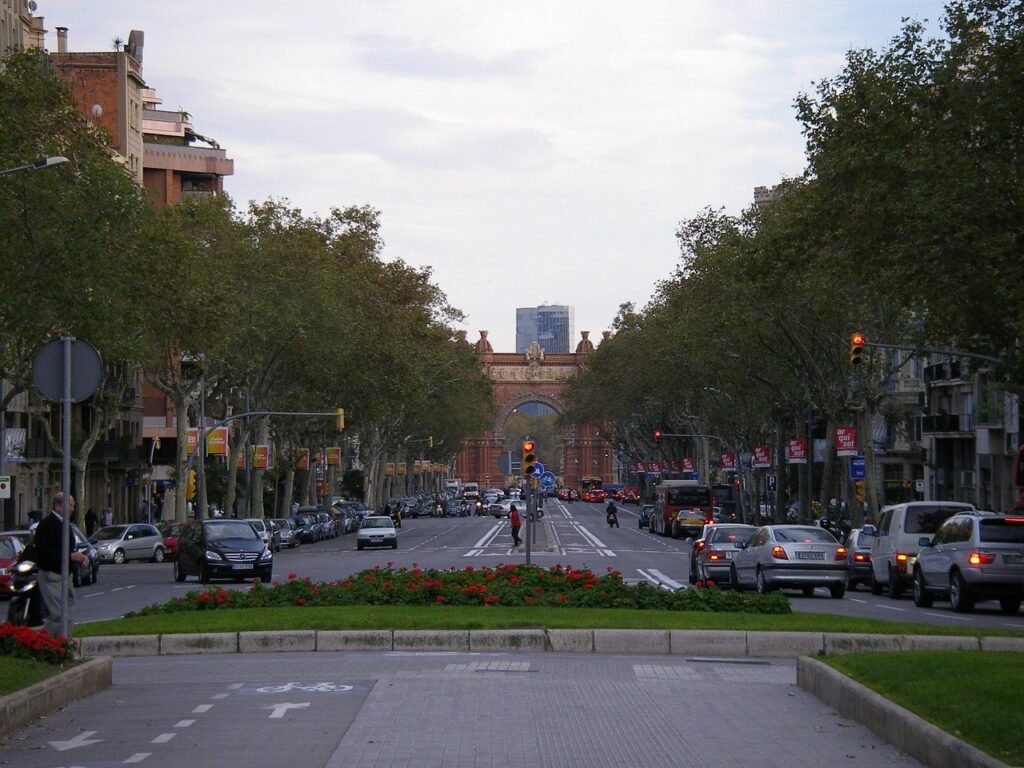
Las Ramblas can be crowded especially in the summertime. Tourists can lay under the shade of the tall trees and relax. At the end of the street and as you approach the sea you will get the opportunity to experience an amazing view and a picturesque landscape.
Casa Milà
Casa Milà was built between 1906 and 1912 and it was originally designed to house the wealthy families of Barcelona. Casa Milà is also known as La Pedrera or “The stone quarry” due to the vast amount of stone used to construct the building and due to it looks like an old quarry. It is the last private residence designed by architect Antoni Gaudí and it is one of the most recognized works of him.
It’s one of several Catalan modernist buildings to be UNESCO listed (In 1984, it was declared a World Heritage Site by UNESCO) and was the fourth and final Gaudí building on Passeig de Gràcia.
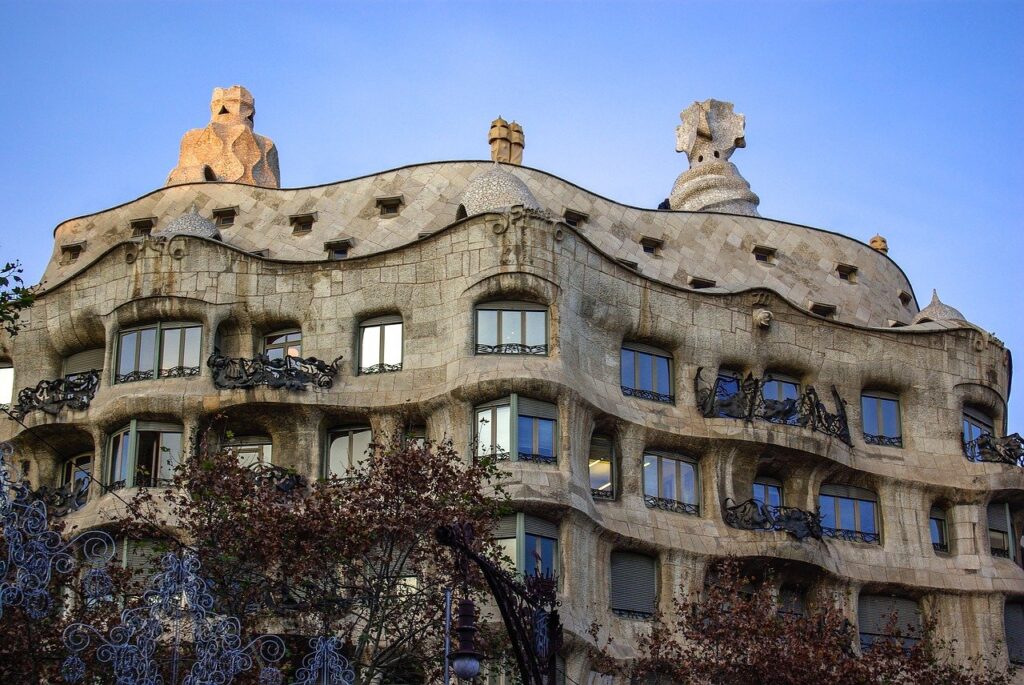
Also, it is known that when Casa Milà was designed Gaudí was at the top of his game and you can see that from the staircases that lead you to the building’s rooftop where you find yourself in a scene that’s like a movie and seems completely out of this world.
Since 2013 it has been the headquarters of the Fundació Catalunya La Pedrera which manages the visit to the building, exhibitions, and other cultural and educative activities at Casa Milà.
Park Güell
Park Güell is another Antoni Gaudí masterpiece but this time was designed by the mind of Eusebi Güell. It is a public park which you can visit with a free ticket but this ticket won’t grant you access to the best parts of the park. You need to purchase the Monumental Cove ticket to explore the park in full.
The park itself has 8 areas of natural forest and 12 areas of decorated gardens with architectural elements created by Antoni Gaudí. There are picnic areas and a spectacular landscape that offers scenic views of the city and the sea. Gaudí himself loved this area of the city, and his home was located in this neighborhood where he lived for nearly two decades.
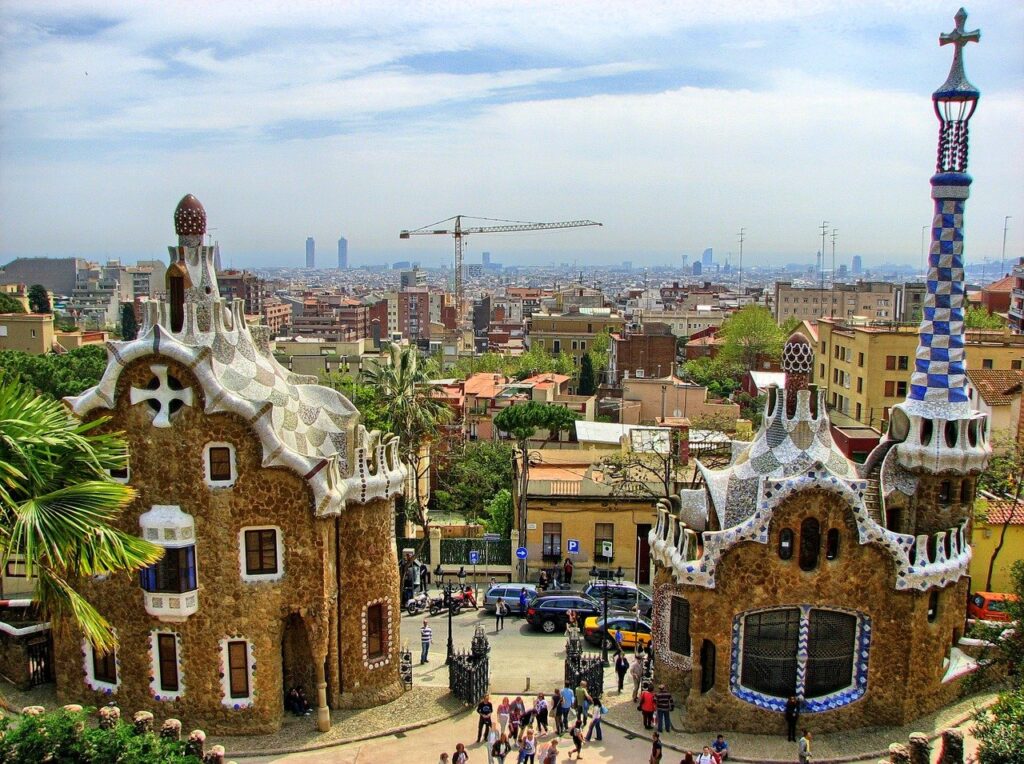
The park is located on Carmel Hill which belongs to the mountain range of Collserola, it was built from 1900 to 1914 and officially opened to the public in 1926. In 1984, UNESCO declared the park a World Heritage Site under “Works of Antoni Gaudí”.
Articles Recommended:
Montjuïc Mountain
Montjuïc Mountain is one of two mountains of Barcelona and is located pretty much in the middle of the city so it is easy to get to. When you get to the top, except for the magnificent view there are lots of different attractions to visit like the old grounds of the 1992 Olympic Games, the National Catalonian Arts Museum, and the Poble Espanyol Museum. Because it’s located near the seaside it is more suitable to visit with public transport than the other Barcelona mountain Tibidabo.
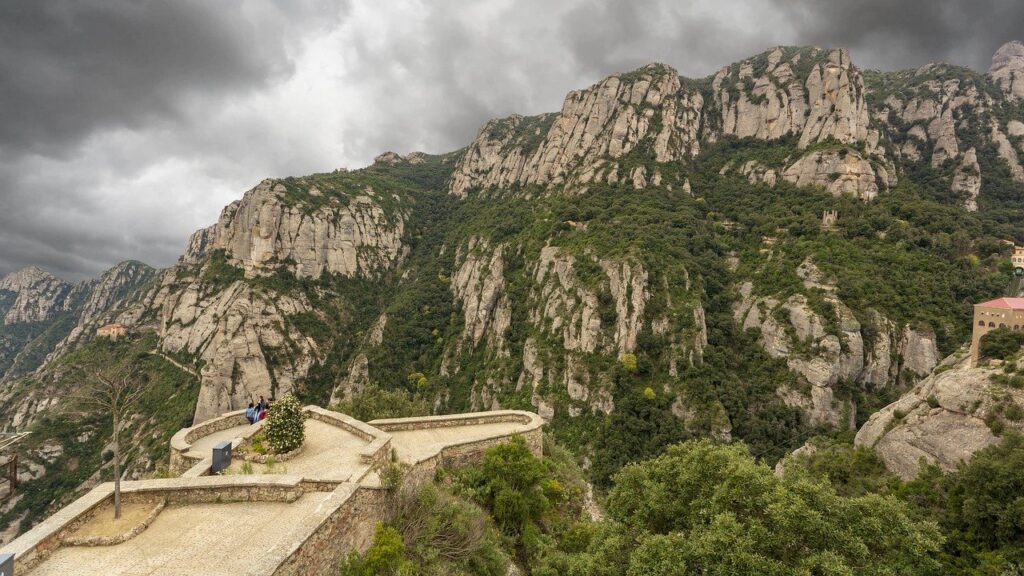
When you get to the top you will find the Castell de Montjuïc which is an old castle or more rightly an old military fortress from the 17th century. The castle is standing on a vantage point 173 meters above the port and is a symbol of the city’s struggles during different periods in its history. Until today there are remains of huge guns that were placed in the castle.
There are a lot of parks and gardens to the lower levels of the fort and further down is the Font Magica in front of the Palau Nacional which holds a museum today.
